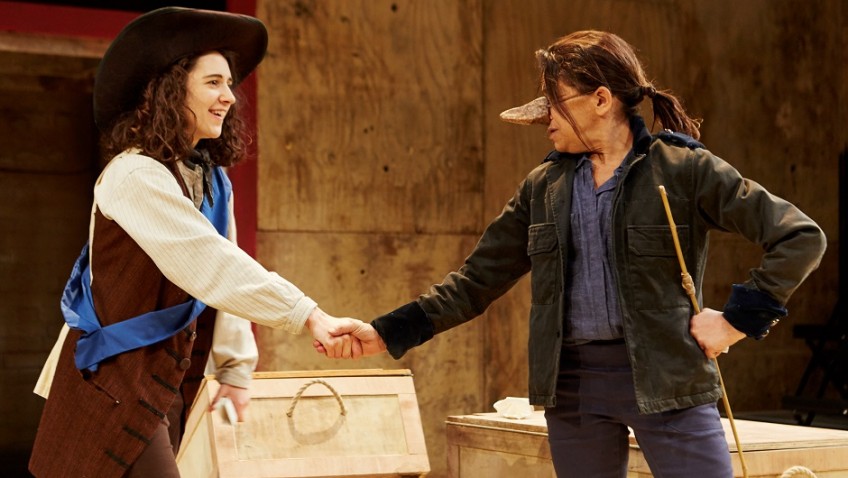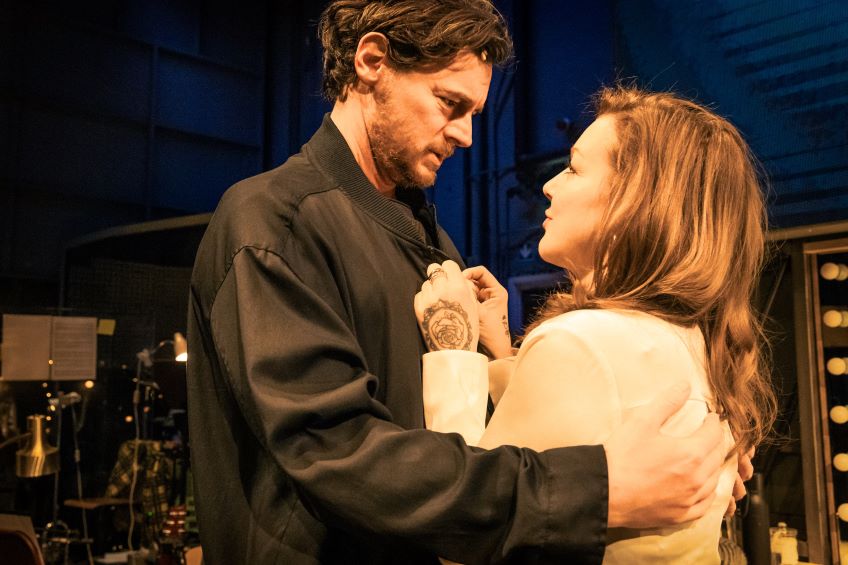Robert Tanitch reviews Cyrano de Bergerac at Southwark Playhouse, London SE1
Actresses have, quite rightly, been complaining that there are more roles for men than there are for women. One way to address the problem in classic plays is to change the sex of the character.
Another way, not so successful, is to have all-female cast and the women pretending to be men. We have seen it done recently at the Donmar Theatre with Julius Caesar and Henry IV.
For sheer theatrical bravado, of an unashamedly old-fashioned kind, Edmond Rostand’s Cyrano de Bergerac, which had its premiere in Paris in 1897, is hard to beat.
Rostand, at twenty-nine, in love with theatre and hankering after some long lost chivalric ideal, looked back to the 17th century and, in a dazzling mixture of rhyme and rapier, played up the romanticism to the hilt, to provide a verbal and visual firework display.
Cyrano, poet, soldier, duellist, a man of courage and wit, who can improvise and rhapsodise at will, is one of the great romantic figures of all time: a flamboyant, swash-buckling, hot-headed Gascon who scorns all that is ignoble and mediocre.
Cyrano was created by the great French actor, Coquelin. In the 20th century he has been memorably performed by Derek Jacobi on stage and by Gerard Depardieu on film.
Cyrano without a grotesque nose would not be Cyrano but the nose has got to be real. It cannot be a pantomime nose tied on with string as it is in this production by Russell Bolam.
 Kathryn Hunter is Cyrano. Hunter has played other male roles (King Lear, Richard III, the Fool, Puck and Kafka’s monkey) and, as you would expect, she is always watchable.
Kathryn Hunter is Cyrano. Hunter has played other male roles (King Lear, Richard III, the Fool, Puck and Kafka’s monkey) and, as you would expect, she is always watchable.
But in no way can she or an all-female cast of eight begin to do proper justice to Rostand’s romantic drama Cyrano de Bergerac is a big play and it needs a big production and the full colourful spectacle. It needs a big theatre and a big cast. It needs panache.
You may be interested to know that the first time an all-female company appeared on the London stage was in 1664 in Thomas Killigrew’s The Parson’s Wedding.
I do not know the play but Samuel Pepys, a regular theatregoer, said it was obscene. So a revival with an all-female fun might be a lot of bawdy fun.
To learn more about Robert Tanitch and his reviews, click here to go to his website




